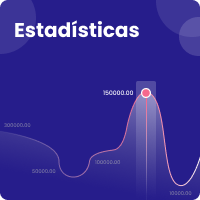A CYBER-PHYSICAL LEARNING ENVIRONMENT FOR NETWORKED SCAFFOLDING IN ENGINEERING AND SCIENCE
DOI:
https://doi.org/10.26507/ponencia.1356Resumen
In spite of the tremendous advances in information technology and the critical role of laboratory-based engineering education at all levels, the majority of research in the learning sciences and the design of effective technology-based learning environments examine learning within K-12 settings. Little has been done to date to understand the role of technological and digital tools in engineering education. Therefore, there is a critical need to investigate the role of cyber-physical inquiry systems that integrate signal processing, feedback control systems, computational modeling and simulation and data-communication technologies for learning purposes. In tandem, we must adequately prepare future engineers for the complex and rapidly evolving global challenges with knowledge and skills that go beyond mere theory — knowledge that is typically gained by generating, manipulating, analyzing, processing, simulating and visualizing materials, energy, processes and information.
To better prepare future engineers to effectively exploit the forthcoming data deluge, advances from the learning sciences in inquiry-based learning can help engineering educators and engineering curriculum designers to design authentic learning experiences. However, to engage learners in meaningful learning it is necessary to adopt a “practice perspective”. In a practice perspective the focus of learning (and research) is on participation in authentic experiences, where learning environments: (a) are personally meaningful to the learner, (b) relate to the real-world, and (c) provide an opportunity to think in the modes of a particular discipline.
Through this position paper we present a technological framework and learning experiences grounded in theories of learning that can foster authentic practice through cyber-physical systems. Our framework is embodied in a technology-enhanced learning environment called “CyPhy-LENSES: Cyber-Physical Learning Environment for Networked Scaffolding in Engineering and Science.”
The mechanism by which we will propose to make CyPhy-LENSES available to the educational community is through the premier cyberinfrastructure portal for NEES (the Network for Earthquake Engineering Simulation). Tools have been developed recently for tele-operation and tele-observation of instructional shake tables, as well as for data streaming and analysis. Most of these tools are open source and are being continually updated and improved. We plan to employ this extensive array of cyberinfrastructure tools developed for NEES research to enhance the learning process at the undergraduate level.
The proposed CyPhy-LENSES provides the mechanism to engage a wide range of students in innovative laboratory experiences based within the framework of earthquake engineering, one readily demonstrated element of hazard mitigation, which will provide a combination of fundamental concepts and emerging technology in related topics (e.g. structural engineering, structural dynamics and structural control). The activities are based on the use of a bench scale shake table lab station.
Through the proposed learning experiments undergraduates will learn the fundamentals of structural dynamics (e.g. mode shapes and frequencies) while gaining experience with sensors and sensor technology, data acquisition, emerging technologies for seismic response modification, and established cyberinfrastructure tools.
Descargas
Descargas
Publicado
Cómo citar
Evento
Sección
Licencia

Esta obra está bajo una licencia internacional Creative Commons Atribución-NoComercial-SinDerivadas 4.0.
| Estadísticas de artículo | |
|---|---|
| Vistas de resúmenes | |
| Vistas de PDF | |
| Descargas de PDF | |
| Vistas de HTML | |
| Otras vistas | |








